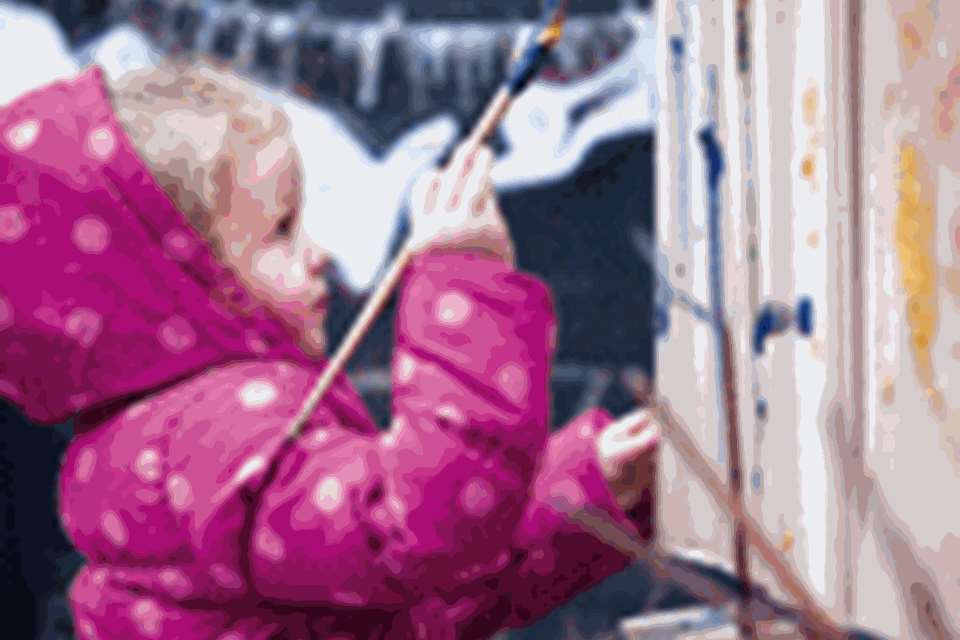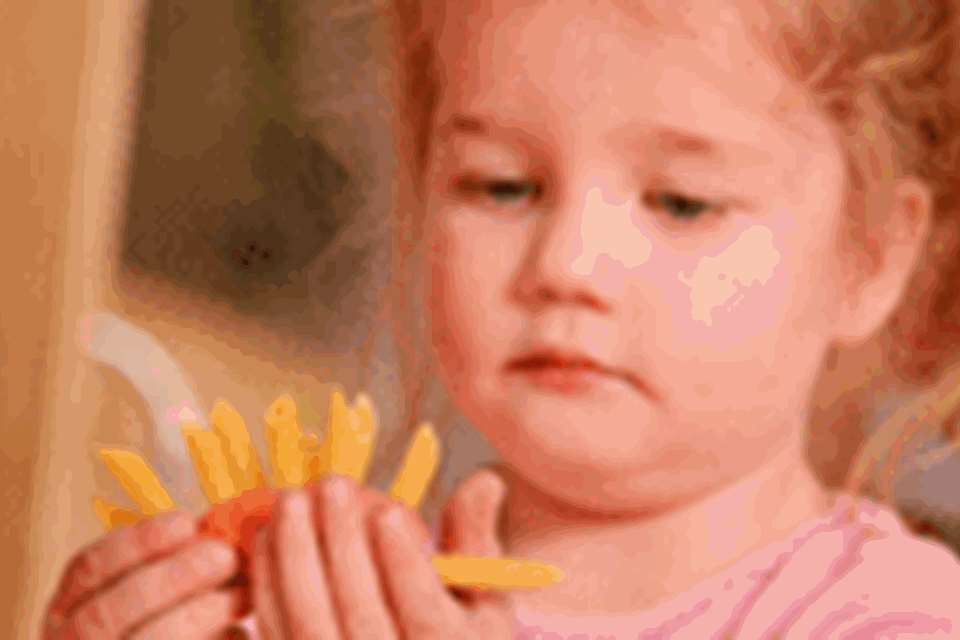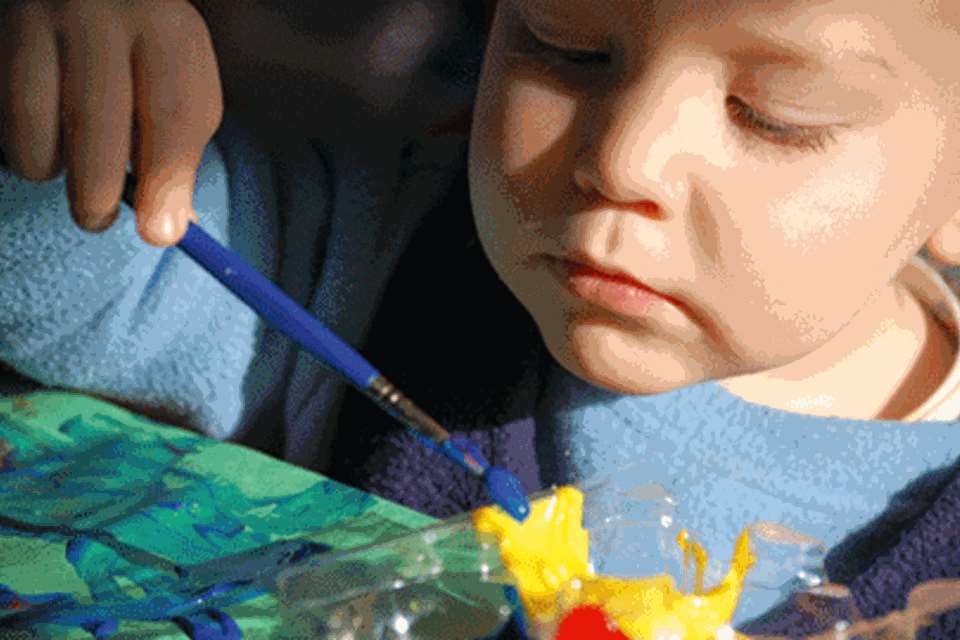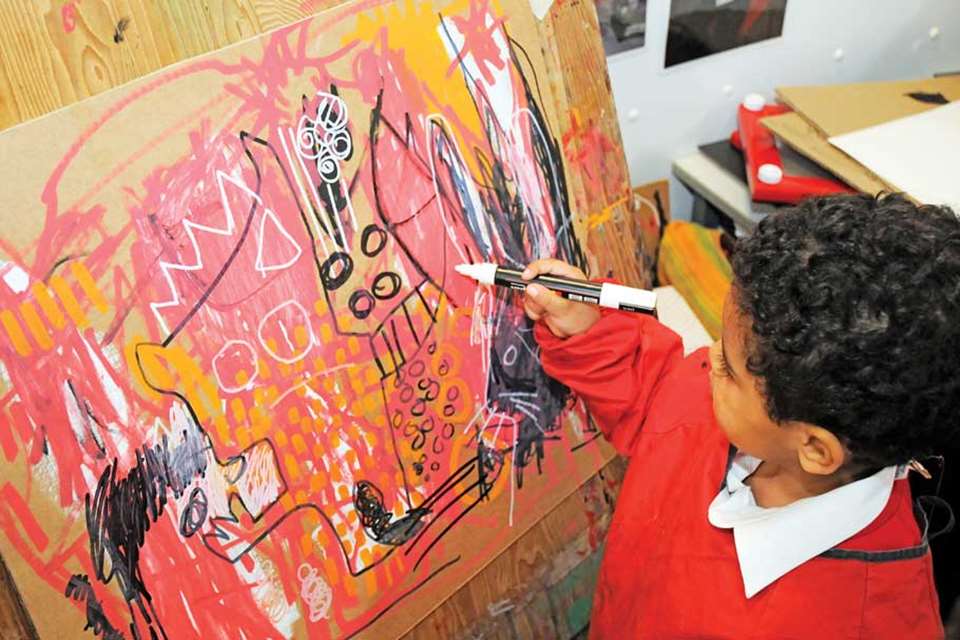Home Learning - A parent’s guide to... drawing and painting
Ruth Thomson
Monday, November 16, 2015
What are the benefits of children creating visual works? And how can you encourage them to do so? Penny Tassoni offers advice

In some ways, you could argue that there is a golden age of drawing and painting that occurs when children are between two and five years old. In these years, most children love to make marks and draw with total abandon, leaving parents with a sizeable collection of artwork. It make this a wonderful period to observe children’s creativity, and their view of the world.
FIVE THINGS YOU NEED TO KNOW ABOUT DRAWING AND PAINTING
1. An innate skill
As humans, we appear to be primed to make marks and drawings. The earliest cave art is thought to be 40,000 years old and some of the oldest marks that have been found are handprints. It is perhaps not surprising, then, that from very early on babies are interested in the marks that they make with food and their hands and that toddlers love to scribble on walls.
2. Emotional development
While adults often focus on what children are producing, drawing and painting supports children’s emotional development. It allows them to release and express feelings.
It is also a way in which very young children can gain confidence, as making a mark on something can feel empowering. Drawing and painting can also help them to process feelings and ideas.
3. Links to early writing
Many children who enjoy drawing and painting feel positive about early writing. Early writing is inseparable from children’s early drawing and painting. Both skills require children to enjoy making marks and to develop an understanding that marks can be used as symbols to represent ideas.
The key difference is that children later learn that marks can be used to symbolise the spoken word. There is often a period when their drawings have letter shapes within them.
4. Interests and knowledge
As young children’s drawings and paintings develop, they increasingly represent the world as children see it. They sometimes portray, for example, adults as having long legs.
What children choose to draw and paint often reflects what is important or interesting to them. This why children often try to represent their family members.
5. Maintaining confidence
Young children enjoy drawing and painting without being too self-critical, but this changes as they become older. The focus for adults in children’s earliest years should be about building confidence and enjoyment, so that when children become self-critical they don’t decide to give up completely.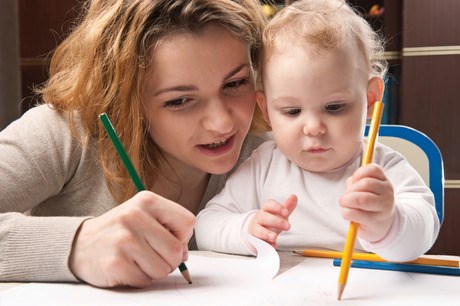
STAGES IN DRAWING
Most children seem to find drawing easier to master than painting because they can gain greater control using felt-tip pens, crayons and pencils. But they also enjoy the physical and sensory experience of painting, so it is important they have the chance to explore paints too.
How quickly children go through these stages is linked to other areas of development, such as hand movements, and also their interest in drawing. Most children are able to represent a person or familiar object such as a house in a recognisable form between four and five years old.
Exploration of materials
In this first phase, you may find that your child simply enjoys exploring and seeing what paints and marks can do. If children enjoy the materials that they are using, they may fill up the paper.
Using repeated gestures to make marks
In this next phase, children use repeated gestures as a form of expression. You may see plenty of circular forms as well as straight lines. Children can be very purposeful in this phase.
Using marks and shapes to represent the world
At about three years old, most children begin to draw with a clear intention to represent a person or object. They may say at the outset what they are going to draw, although the finished result may not be recognisable to you!
Children may also decide during the process to relabel what they have produced if it looks more like something else that is familiar to them or they think that you will be interested in it. The first representational attempts are usually people – often without arms, legs or even torsos.
Some recognisable representations of people and familiar objects
From about four and with drawing experience, children increasingly produce more representational drawings, especially of people. People start to have legs and arms, although they may at first sprout from the head. Eyes and hair are often an afterthought.
Children may talk aloud as they are drawing, to guide themselves through the process and bring the drawing to life. Again, they may also change their minds if they realise that they cannot represent what they originally intended.
Increasing skill, but also awareness
From five years, children start to be able to draw with increasing skill. They may choose colours carefully, try to represent objects according to size and also attempt to put more detail into pictures.
Between the ages of five and seven, children also become more aware of gaps between their intentions and what they have produced and this can lead them to become frustrated or to ask for help. Some children also start to compare their drawings and painting to other children and become disheartened.
ORGANISATION
Children are much more likely to enjoy drawing and painting if they are comfortable. Choose items that are easy for them to manipulate, and if you can see your child struggling to make a mark think about using another resource.
It is also worth checking that your child is physically comfortable. They may need to stand to draw or paint at a table or may choose to draw or make marks while crouching on the floor. As children often enjoy painting ‘large scale’, think about whether you can put up paper, using masking tape, onto wipeable cupboard doors or even outdoors.
FIVE TIPS for ENJOYING DRAWING AND PAINTING
1. Join in
One of the best ways to encourage your child is to role model painting and drawing by simply joining in alongside them. Sitting or standing next to your child and drawing or painting your own pictures or patterns can often boost children’s interest. You may also find that your child will copy what you do and how you use materials.
2. Don’t ask lots of questions
It is helpful to show interest in what your child is doing, but avoid asking too many questions, especially when your child is just starting to draw and paint. This is because some of their efforts will be exploratory and they may have no aim in mind.
It is usually better to ask children about whether they enjoyed their drawing or painting and to wait and see what comments they make.
3. Be relaxed
It is important that children are able to choose when and if they draw and paint, and that they keep experimenting and making marks in different ways.
For children to make progress and remain interested, activities need to be ‘pressure-free’. It is not a good idea to ask children to do a drawing or painting ‘for you’ or to seem disappointed if your child ends a session without having produced anything.
4. Have realistic expectations
It is important in the early stages to have realistic expectations of what your child is likely to produce. It is normal, for example, for young children not to put eyes or mouths in drawings of people.
Asking your child ‘what about mummy’s hair?’ or ‘Does daddy really look like that?’ can make some children feel that their representations are not good enough for adults and can mean some children choose not to draw or paint.
5. Avoid too much colouring in
It is thought that providing young children with too many printed images can reduce their confidence in producing their own drawings. This means that while the odd colouring activity will not harm your child, it is better to encourage your child to draw for themselves.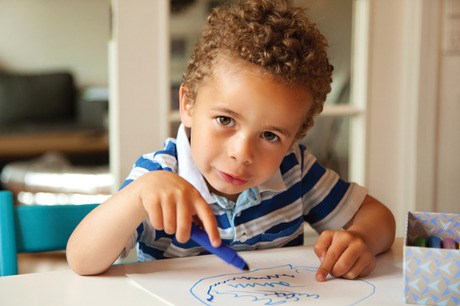
COMMON QUESTIONS
Q. We haven’t the space to keep all my son’s paintings. Does this matter?
A. This is a classic dilemma, but most parents will quietly ‘lose’ excess artwork when their child no longer seems interested. However, it is important to value your child’s work. Talk at the time about what your child has done and perhaps put up one or two pictures (if necessary, take photos of the others).
You could also make a scrapbook of examples of artwork at different ages and stages. Your child will enjoy looking at this and you could also encourage him to select ‘special’ pictures to add to his portfolio.
Q. My daughter’s drawings are behind of those of her friends of the same age. What I can do to help?
A. Children’s drawing is partly linked to their development, but also to how often they practise. Firstly, don’t worry. Provided your child is happy, talking well and has typical physical skills, her drawing will come on little by little.
You could think about making drawing and painting more fun by putting out some interesting resources such as sponges or glitter pens and join in with fun.
ACTIVITIES TO SUPPORT PAINTING AND DRAWING
1. Take a pen for a walk
This is a lovely activity that you can use to kindle children’s interest in drawing and painting. Put out a large sheet of paper or use the back of some wallpaper on a table.
Look out for a variety of different pens, crayons and markers. Sit with your child and tell them that you are going to take a pen for a walk. Start drawing a wiggly line on the paper. See if your child wants to join in!
2. Paint with rags, sponges and brushes
Try putting out a large sheet of paper on a table or the floor. Pour two or three colours of paint onto a wipeable kitchen tray. Put out some rags as well as a kitchen sponge and one or two paintbrushes. See what lovely marks you can make together!
3. Mess-free painting
If you are not up for using paints, use bath time for some ‘clean’ painting. Put water in a plastic bowl and add a few drops of food colouring. Provide a brush and encourage your child to make marks on the side of the bath (or shower curtain). Afterwards, rinse with water and detergent if necessary.



